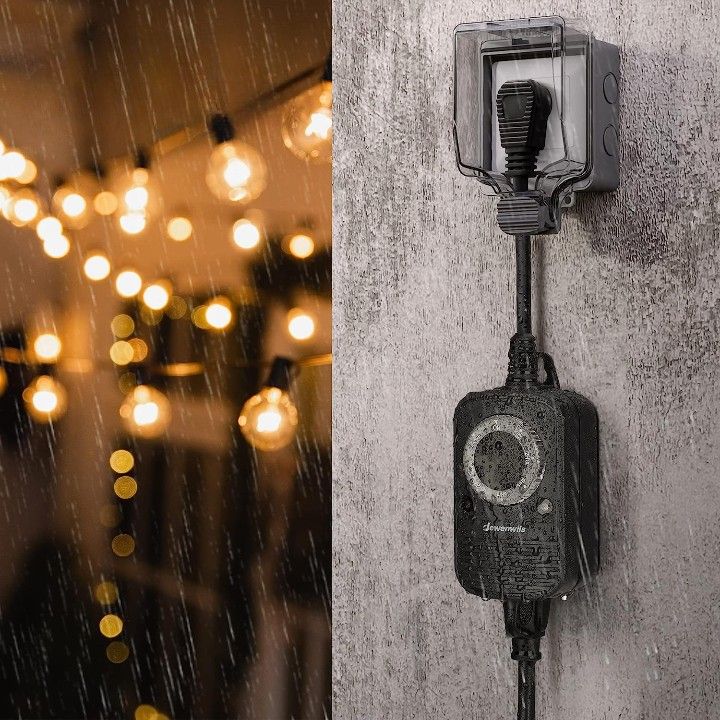Have you ever forgotten to turn off the lights before leaving the house? Or have you ever come home to a dark house after a long day at work? These are common problems that can be easily solved with a timer switch for your lights. Timer switches are an affordable and convenient way to automate your lighting system, making your life easier and more energy-efficient.
In this blog post, we will explore the benefits of using a timer switch for your lights, the different types of timer switches available, and how to install one in your home.
Benefits of Using a Timer Switch for Your Lights
Timer switches offer numerous benefits, making them a popular choice for homeowners. They provide convenience and comfort, allowing you to control your lighting system from anywhere and at any time. With a timer switch, you can set your lights to turn on and off automatically, whether you're at home or away. This feature can deter burglars and provide a sense of security.
Additionally, timer switches can reduce your energy consumption, translating into lower electricity bills. By setting your lights to turn off after a certain period, you avoid wasting energy and contributing to environmental pollution. Timer switches also extend the lifespan of your light bulbs by preventing them from overheating.
Types of Timer Switches Available
There are several types of timer switches available, each with its own set of features. Mechanical timers are the most common and affordable type, using a dial or switch to control the timing of your lights. Digital timers, on the other hand, have an LCD display and can be programmed with multiple on and off settings. Wi-Fi-enabled timers can be remotely controlled via your smartphone or tablet, providing the ultimate convenience.
How to Install a Timer Switch in Your Home
Installing a timer switch is a straightforward process that can be completed by any DIY enthusiast. Firstly, you need to switch off the power supply to the light circuit you want to install the switch on. Remove the existing switch cover and disconnect the wires from the switch. Connect the wires to the new timer switch, following the manufacturer's instructions, and then fix the switch onto the cover plate. Replace the cover plate and switch the power supply back on to test the switch.
Tips for Using Your Timer Switch
To make the most out of your timer switch, there are a few tips you can follow. Set your timer switch to align with your daily routine and lifestyle, so your lights turn on and off when you need them to. You can also set up different schedules for weekdays and weekends if you prefer. Experiment with different timings to find the perfect balance between comfort and energy savings. Lastly, ensure that your timer switch is compatible with your light bulbs or fixtures. If your light bulbs have a dimmer function, you will need to install a compatible switch for it to work correctly.
FAQs About Timer Switch for Light
Can I put a timer on my light switch?
Yes, you can put a timer on a light switch. There are several types of timers available, including digital timers, mechanical timers, and programmable timers. Depending on your needs, you can choose a timer that will automatically turn the light on and off at specific times or one that will allow you to manually set the time. Additionally, some timers can be programmed to turn lights on and off at different times throughout the day.
How does the light switch timer work?
A light switch timer is a device that is used to control the on/off timing of a light switch. It works by connecting to the existing light switch wiring and then controlling the power flow to the light switch. The timer is programmed with the desired on/off times, and when the timer reaches those times, it will turn the power on or off to the light switch. In addition, some light switch timers are also able to be programmed with dimming settings, allowing for the light to be dimmed at certain times.
How do you control lights with a timer?
Controlling lights with a timer is relatively easy and can be done with a variety of different devices. The most common way to control lights with a timer is to use a programmable wall switch. These switches can be programmed to turn the lights on and off at specific times. You can also use a timer plug to control the light with a timer. These plugs can be plugged into any outlet and then connected to the light fixture, allowing you to control when the lights turn on and off. Finally, you can also use a smart home system, such as Alexa or Google Home, to control lights with a timer. This will require a compatible smart home device, such as a smart plug, and you can then set up timers and schedules within the app to control when the lights turn on and off.
What is an electrical timer switch?
An electrical timer switch is a device that can be used to control the timing of electrical appliances. It works by connecting the appliance to a timer, which then turns the appliance on and off at predetermined times. This can be used to save energy and money, as well as provide convenience and security. Timer switches can be used to control lights, heating, air conditioning, and other appliances, and can be used both indoors and outdoors.
In conclusion, a timer switch for your lights is an excellent addition to your home automation system. Not only does it offer convenience and energy savings, but it also adds an extra layer of security. With so many types of timer switches available, finding one that suits your needs and budget is easy. Remember to follow the installation instructions carefully and experiment with different settings, so you can enjoy the full benefits of your new timer switch.








